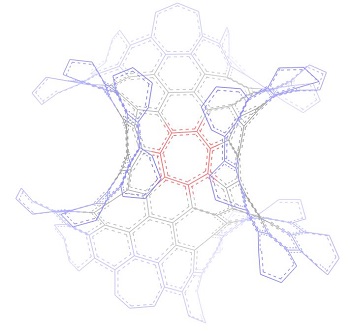
Fig. 1. A beginning of the hyperbolic surface growth by adding layers of heptagons around the central one (shown in red). There are 7 heptagons in the first layer (grey), and 21 in the second layer (blue).
Fig. 4. Schwartz P-surface made out of heptagons. Coloring shows that the same symmetry of heptagons tiling in P207-C168 structure can be visualized in several ways: four pairs of adjacent trimers on the left side, or three pairs of circular tetramers on the right side.
Interactive 3D model for the element of
the Schwartz D-surface unit
cell (requires
javascript).
Controls: spin | no spin | spacefill
| wire
| ball&stick
labels on | off | color |
Fig. 2. Element
of the D-surface decorated by heptagons.
It is constructed by joining four circular
hexamers of heptagons.